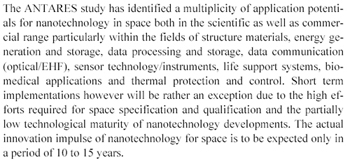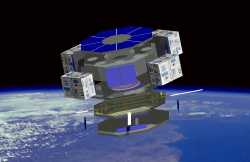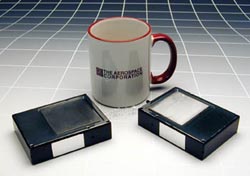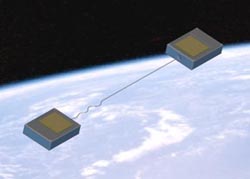Home > Directory > Miscellaneous Nanotechnology > Nanotechnology and Space > Applications of Nanotechnology in Space Developments and Systems
Applications of Nanotechnology in Space Developments and Systems
A Technological AnalysisVDI-Technologiezentrum (Technology Center) -- Future Technologies Division. Düsseldorf, Germany. April 2003
On behalf and with the support of the German Aerospace Center.
An "A to Z" on the when, where, how, and why nanotechnology will impact space applications, and much more. Over 125 PDF pages long, this document carefully outlines the case for nanotech in space.

Click here for the whole paper (PDF 1.8Mb)
To order the print version, or for more information on the report, please contact:
Dorothea Braun
VDI-Technologiezentrum
Graf-Recke-Str. 84
40239 Düsseldorf
Tel. +49 (0) 211 62 14 6 13
Fax +49 (0) 211 62 14 1 39
braun_d@vdi.de
The first of the three images seen here is named in the report, but does not show up. We have included it here so that you can see what they refer to in the report. The article from which the images originate is all about satellites made on an ever-decreasing scale, and well worth the read. The images - as well as the whole concept of miniature satellites - are relevant to nanotechnology because of the scale of some of the current and future generations of components, which enable shrinking and weight reduction, while at the same time increasing the sophistication of each sat.

A nanosatellite in orbit. |

Picosatellites, less than one-half pound each, are shown against a coffee mug. |

Tethered picosats in orbit. |
Images courtesy The Aerospace Corporation Click for larger versions.
From Tiny Satellite Constellations to Debut in November ('99) Launch
Editor's note: their use of the terms "pico-" and "nano-" may be confusing to those who have not read their article.
Their "picosatellites" each weigh less than one-half-pound and are actually slighty larger than a deck of cards (see image above) -- they are not picoscale themselves. They do, however, contain MEMS systems, for systematic testing and use in space.
"Although the basic mission of picosats is to serve as a platform for testing miniature devices such as MEMS, they also serve as a link to nanosatellites, slightly larger than picosats and envisioned as tiny workhorses of the future." These "nanosatellites" will be 1 to 10 kilograms, and could be operational within five to ten years. They also will not be nanoscale, but will carry MEMS and possibly NEMS components.
To further clarify the naming: "Satellites are classified according to weight. Picosats are under one kilogram (2.2 pounds equal a kilogram), while nanosatellites range from 1 to 10 kilograms. Other classes are microsats, 10 to 100 kilograms; small sats, 100 to 1,000 kilograms; and standard satellites, 1,000 kilograms or more. The smallest category envisioned is the femtosat, less than one-tenth of a kilogram, a satellite that would handle very simple missions."
|
|
||
|
|
||
| The latest news from around the world, FREE | ||
|
|
||
|
|
||
| Premium Products | ||
|
|
||
|
Only the news you want to read!
Learn More |
||
|
|
||
|
Full-service, expert consulting
Learn More |
||
|
|
||